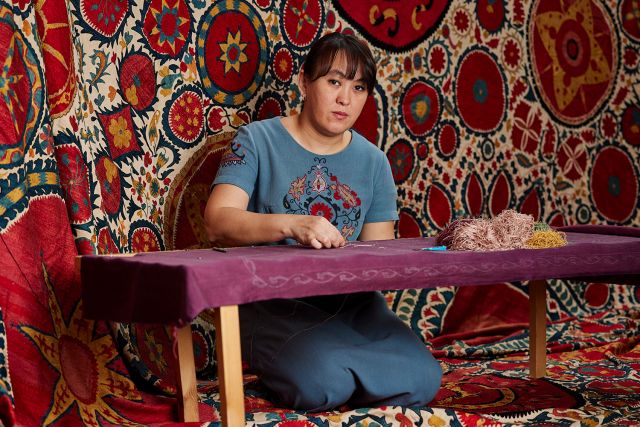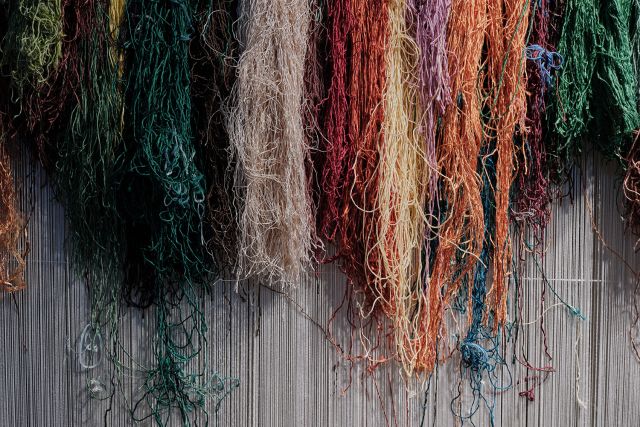Tapchan is a type of outdoor furniture traditional in Central Asia, especially in Tajikistan and Uzbekistan. It is used either as a bed for several people to rest on in the summertime when it is hot, or as a place for eating using a table in the middle. The tree from which this tapchan is cut is called Gujum, which is typical in Khwarazm, a region in western Uzbekistan.
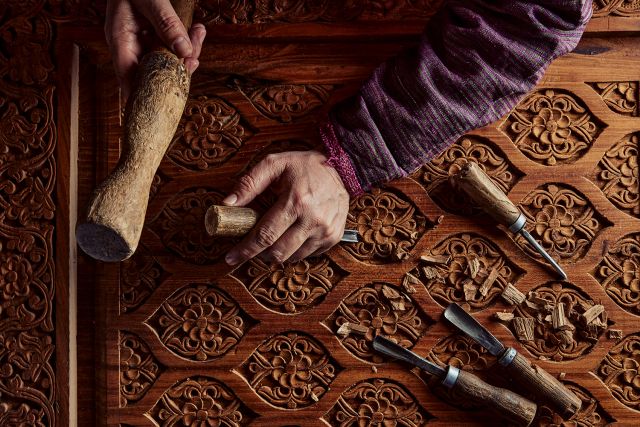
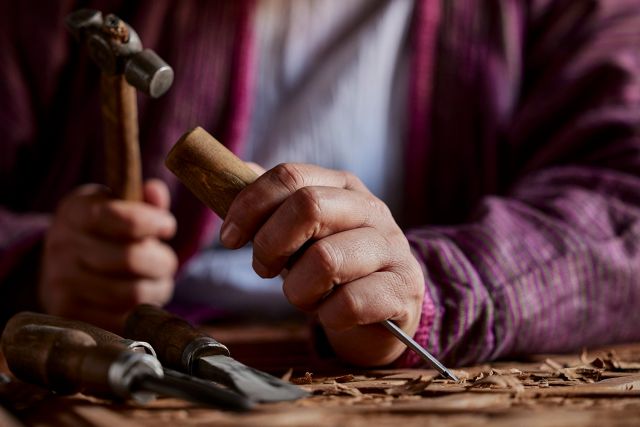
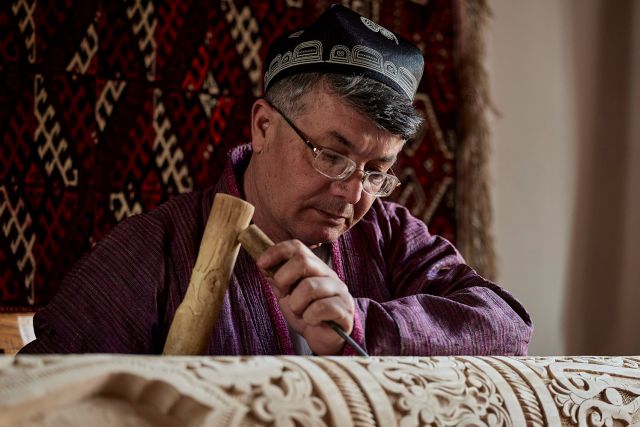
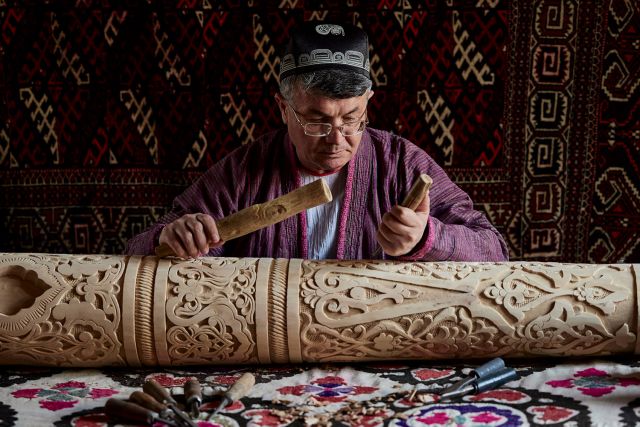
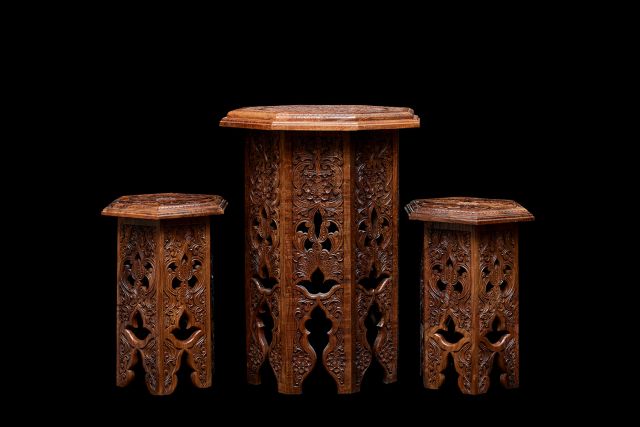
Odamboy Masharipov
- Woodcarver
- Khiva, Uzbekistan
- Master Artisan
- Recommended by The Art and Culture Development Foundation
By appointment only
+998 919960900
A master in floral motifs
- • Odamboy studied woodcarving from the young age of 12
- • He focuses on recognisable botanical patterns
- • His house is now an open museum
Living in Khiva and its surroundings all his life, Odamboy Masharipov has dedicated himself to the ancient craft of woodcarving with the flair of local tradition. In his teenage years he studied at the workshop of the People’s Master of Uzbekistan Haytmat Boghbekov. Odamboy opened his own workshop in 2002 with the blessing of his teacher and since then he has taught numerous apprentices of his own. Odamboy creates household objects such as tables and chairs, and decorates large-scale architectural elements, including gates and columns. He expands on the regional school of ornamentation that features detailed and dynamic patterns mostly depicting local trees and blooms. His work has earned him several prizes and a widespread authority as a master craftsman.
Read the full interviewWorks
Photo: ©Andrey Arakelyan

Photo: ©Andrey Arakelyan
This is a small chest made of the tree called Gujum, that is a unique tree growing now only in Khwarazm, a region in western Uzbekistan. This tree is also called the Uzbek Karagach, as it is from the elm family. The ornaments on the chest were handcarved and the metallic handle with a lock was added afterwards. Usually, women place their clothes inside the chest.

Photo: ©Andrey Arakelyan
This is a woodcarved model of Khiva city's inner walls. The model depicts the cultural sites of the city such as the Madrasahs, famous minarets and arks.

Photo: ©Andrey Arakelyan
This is a handcarved horse figurine with a small stand. After the initial process of carving, it was painted with acrylic paints and decorated with ornaments.

Photo: ©Andrey Arakelyan
Traditional for meals, this small octogonal table with short legs is called Khantakhta which can be translated as a table of the Khan (the title of the ruler).





